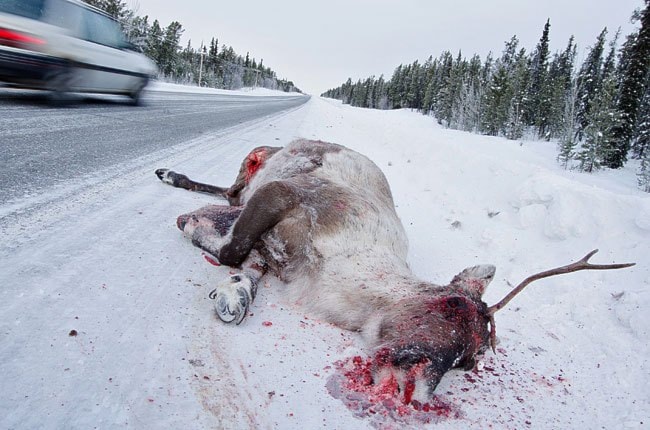The Porcupine caribou herd has put the vulnerable Hart River herd at risk.
The two herds’ winter ranges overlap.
But this year, the Porcupine herd has hunkered down in Alaska, leaving the tiny Hart herd alone on the Dempster.
So anyone hunting caribou along the highway has been culling the Hart herd.
It’s a concern, said Yukon Environment biologist Dorothy Cooley.
“Because (the Hart herd is) so small, it can’t withstand a large harvest,” she said.
“The numbers we could take from the Porcupine herd, which (numbers) roughly 100,000, we can’t take from the Hart.”
In 2006, the only time it has been counted, the Hart herd numbered just 2,200 animals.
To protect it, Environment officials imposed a hunting ban effective today, covering part of the Hart’s winter range.
It applies to all licenced hunters.
But it does not affect the Tr’ondek Hwech’in and Na-cho Nyak Dun, who can continue to harvest caribou under their final agreements.
Cooley doesn’t know how many Hart caribou have been harvested this year.
“You’d have to talk to the First Nations,” she said.
The Yukon’s caribou season opens August 1, while the Porcupine herd is still calving on Alaska’s North Slope.
Woodland caribou, like the Hart herd, calve earlier and remain in the same region year round, while barren-ground herds, like the Porcupine, migrate huge distances.
If the Porcupine herd does come down to the Dempster, it’s not usually till the end of October, said Cooley.
So there are three months when only the Hart can be harvested.
And, though the hunting season for Yukon woodland caribou ends October 31, there is little relief for the Hart herd.
Because the Hart’s winter range overlaps the Porcupine, the subzones it tromps through remain open until the end of January.
So, when the two herds mingle, it’s likely hunters are shooting Hart caribou accidently.
“Woodland caribou tend to be bigger than barren ground, and darker, but there’s so much variation it’s difficult to tell,” said Cooley.
“So it’s possible to think you’re getting Porcupine caribou and you’re actually getting Hart.”
When the Porcupine stay farther north, there’s little confusion.
“If the Porcupine herd doesn’t come, we close that area to protect the Hart caribou from the extended season that’s intended for Porcupine caribou,” said Cooley.
That’s what happened this year.
It’s not unusual for the Porcupine to stay farther north, she added.
“They’ve wintered in Alaska quite a bit before.
“Their range is quite large and all of it is potentially winter range.”
This is the fourth closure since 2006.
The hunting ban applies to most of Tombstone Territorial Park and the Dempster Highway between North Fork Pass and the Ogilvie River Bridge.
The Environment Department uses radio-collar data to track the Porcupine herd.
This year, the collars indicated most of herd was already in Alaska.
“There are still a small number of collars in the Yukon,” said Cooley.
“But they are quite far north.”
Because the Porcupine and Hart often overlap, it has been hard to count the Hart herd, she said.
So in 2006, adjusting for the overlap, Environment did the count in fall, rather than late winter.
In the last four years, there have been no attempts to recount the Hart herd.
And there is no count scheduled, said Cooley.
The annual Porcupine caribou hunt usually peaks around the Thanksgiving weekend.
But with no Porcupine in the area, Cooley’s expecting the hunt to be much smaller this year.
There are check stations set up, in attempt to monitor the caribou killed during hunting season.
However, harvest numbers won’t be available till early next year, she said.
Cooley isn’t sure how many Hart caribou will be harvested by First Nations who usually bag Porcupine in the months ahead.
“I suppose you have to ask the First Nations what their intentions are,” she said.
Calls to the Tr’ondek Hwech’in and Na-cho Nyak Dun were not returned by press time.
In September 2009, the territorial government imposed a ban on hunting cows from the Porcupine herd.
It remains in place and applies to all hunters, including aboriginals.
There is also a ban on hunting cows from all woodland herds in the Yukon, except the Bonnet Plume herd, said Cooley.
The Porcupine herd is estimated at 90,000 to 100,000 animals.
But it has not been counted since 2003.
An aerial count this year appears to have been successful.
Alaska is working on it, said Cooley.
Those numbers should be available early next year.
Contact Genesee Keevil at
gkeevil@yukon-news.com
